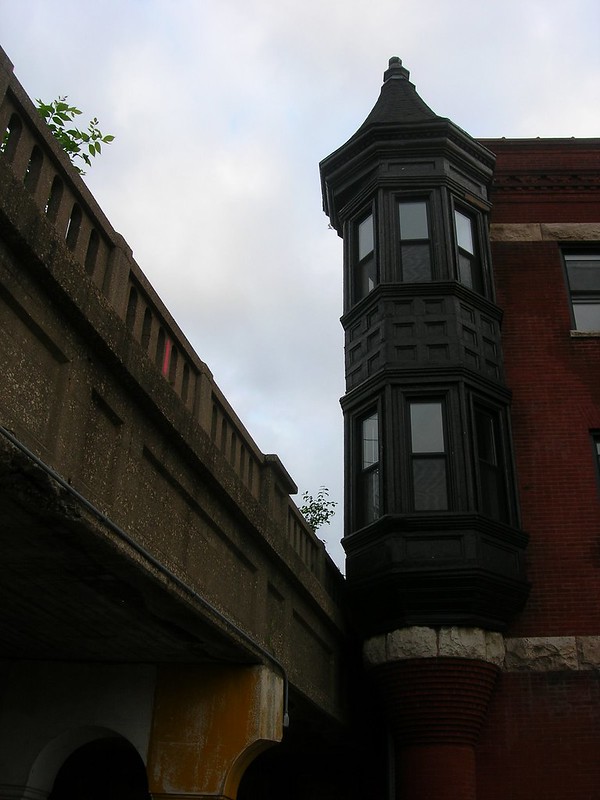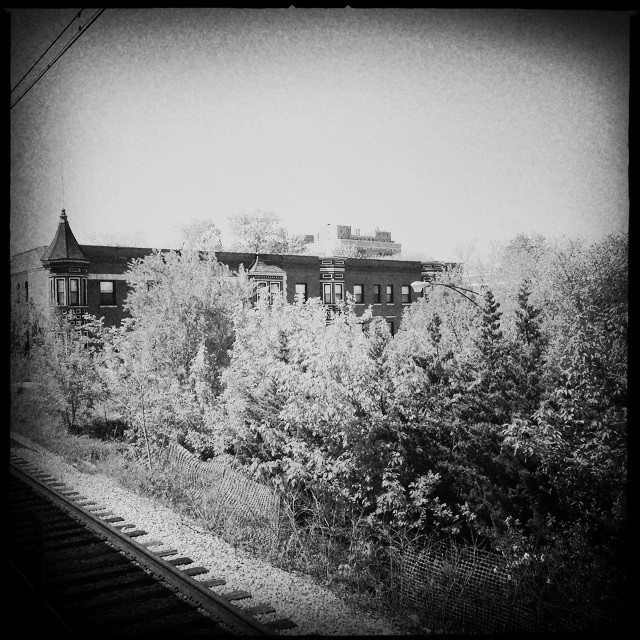Portals to another dimension
I must have seen “The Bewitchin’ Pool” on The Twilight Zone at an impressionable age because to me it’s one of the most memorable episodes of the series, despite its flaws. Imagine — emerging from an ordinary suburban swimming pool into a bucolic world similar to but better than your own. The pool was my first experience with a portal to another dimension, place, or time, a concept notably brought to TV screens by Harlan Ellison in his Star Trek script, “City on the Edge of Forever” and repeated to lesser effect in numerous episodes of the franchise. In “Contagion,” Picard discovers the “masters of air and darkness” indeed.
Alice in Wonderland and Through the Looking Glass are, of course, quintessential stories of such portals. Life may not be better down the rabbit hole or on the other side of the mirror, but the rules seem to be different, the unexpected becomes the norm, and life is truly a game. As a child of imagination, Alice is confused by but accepting of the contradictions and anomalies she finds. Why explore another dimension if it’s going to be just like yours?
Death opens one of these portals. “Break on Through (to the Other Side)” seems to be a call to action, suggesting we try the portal that’s beyond the valley of the shadow of death.
Strangely, all of this brings me to some architectural, structural, or location oddities that have evoked a feeling of the other side in me. Even though portals probably don’t exist, I sense that these places can fire the imagination’s ability to discover one.
The first I can recall only vaguely — curtains, perhaps beaded, through which you passed from one dim room into another at my aunt’s house. As a very small child, I half-expected something wondrous on the other side of the curtain, a different type of place, a monster, a marvel of some kind. Instead, I always found the same darkened room with the same old-fashioned furniture, but that didn’t mean the other dimension wasn’t lurking in the dim light, always just beyond my physical or mental reach.
Later, after she was widowed, her older sister moved into a first-floor apartment in a large converted house near the old bridge over the train tracks in Bellwood. Of interest to my immediate family was that it was the same apartment my maternal grandfather had lived in toward the end of his life (he died when I was two as the last of my grandparents).
What fascinated me was something entirely different. My aunt’s bedroom and living room were on one side of the public hallway leading to the stairs, while her kitchen was up and across the hall, next to the building’s main door. In the morning, we’d get up, put on robes or dress (not me), leave the living room, lock the door behind us, walk across and up the hall, unlock the quaint kitchen (probably old-fashioned even for those days), and have our breakfast in the light streaming in from the window. Afterward, we’d reverse our route, this time locking the kitchen and unlocking the living room, where the heavy drapes were drawn and the light didn’t penetrate. With the indescribably lonely sound of train whistles during the night, the gloom of the living quarters (folks of my parent’s generation or at least acquaintance seemed determined to keep the light out), and the strangeness of living on two sides of a public hallway, I felt like I had landed temporarily in a very different world. Eventually the building was condemned and torn down, and more than 30 years have passed since I listened to the forlorn train whistles in the night.
The first aunt, with the beaded curtains, moved to the second floor of a house in Altoona. I didn’t spend much time there and stayed overnight only a few times. To get to her part of the house, you walked up a steep, straight, narrow staircase. The steps were so deep that sometimes I misjudged them and tripped up the stairs. The apartment itself was small and overcrowded, with stuff piled everywhere — a trait our branch of the Schirf family shares. Entering the vintage kitchen was like stepping back in time, accented by some of my aunt’s additions. One was a table fan from perhaps the 1940s with only a few widely spaced wires covering the blades, the kind of awful, easily remedied design that makes me wonder what the manufacturer was thinking. I avoided that fan because I would be the most likely to fall into it and lose some fingers if not a hand.
This place had two wonderful features. The first was a door in a wall. There was something odd about it that I can’t quite remember. The door may have had steps leading to it, or it may not have been flush with the floor. Perhaps the stairs up began immediately on the other side, which I would not have had the opportunity to see anywhere else. I wish I could remember more, but I never went up the stairs or saw the attic they led to. All I knew about it is what my aunt told me — it was hot and occasionally visited or occupied by bats.
The other feature was a second bedroom off my aunt’s bedroom. To get to this room, you had to step down into a different house, a house with a different look, smell, and feel. My aunt’s visitors, like her younger sister, slept in it, and she stored sewing machines and similar paraphernalia in it. I stayed in it once or twice. It had its disadvantages; for example, if you had to visit the bathroom in the wee hours, you had to avoid tripping on the step (who would remember in the middle of the night to step up or down to pass from room to room?), and you had to make an effort to get by my aunt’s bed on the outgoing and return trips without tripping over her or waking her up. But there was something about the room I loved — it was dark and close, although there were sheer white curtains over the window near the door. It was separate. On one side of the door was my aunt and her downstairs neighbor. On the other side, I was alone in this room, with access only to it and to my aunt’s house. It felt like a different world, one that wasn’t quite in sync with her ordinary world next door. Even the street out the window wore an odd aura from this angle compared to the same street as seen from my aunt’s window. It was like being in a different place at a slightly different time — the same, but not the same.
As she aged, we worried about my aunt because of the steep stairs and the likelihood that someday she would misstep and fall down them. Ironically, when she did fall and break her hip, it was not on her stairs but on a step off the sidewalk at her next-door neighbor’s house. None of us would have foreseen that. At some point, both houses were slated to be torn down, and she moved into the first-floor apartment of a newer house with no interesting features except perhaps the cellar, which, like the attic before, I didn’t see.

All this brings me to a building in Hyde Park that I’ve seen hundreds of times, perhaps, but never noticed or thought much about. Located at 57th Street and Lake Park Avenue, it’s secured now as a vacant building. I hope this doesn’t mean it’s doomed to be torn down. It’s Gothic and gloomy, and even more forbidding and creepy now with metal plates securing the exterior doors and first-floor windows.
One day in passing I noticed for the first time how close the second-story tower room is to the rail overpass, which set me to thinking about how strange it would be to look out over the tracks and to see the trees rooted in the ground at that level, the clouds and rooftops cut off by the lines of the tracks or platforms, and a world floating above a world — all a hand’s breadth away. While they lay sleeping, Metra carried home tired office workers and exuberant revelers and freight trains on the far track moved untold tons of goods from hither to yon — all elevated, at second-story eye level, yards away. Did the people in that room feel as well as hear the power of the freight trains as well as the breezier flight of the more frequent Metra trains? Did anyone who lived there see, hear, feel, and ride trains in their dreams? Did they feel the closeness of their connection to distant places?
Age and experience weaken the imagination, and portals to another dimension don’t open to me and share their secrets as often or as readily as they once did. That’s why I’m so happy that this strange building has, and why I hope it remains here at least a little longer. Today’s architects, “starchitects,” designers, and builders, with their unfailing eye for the contemporary, cold, colorless, and soulless, not only no longer have the keys to the portal; they’re no longer aware of its existence in their utilitarian, ambitious, glory-driven brains.
Update: The building is called the Pepperland, and it’s back to being an apartment building, or the “Frisbee Frat.”
Update 2: Other views of the Pepperland from Metra:



When I was a kid, I was fascinated by the doors to the other apartments in my grandparents’ building. What lay behind them? Apartments! But what did they look like? I couldn’t imagine!
I’ve passed that building on 57th — it’s good that you’ve preserved it here, whatever happens to it out there.
Aren’t you glad you never found out? Keeps some semblance of mystery.